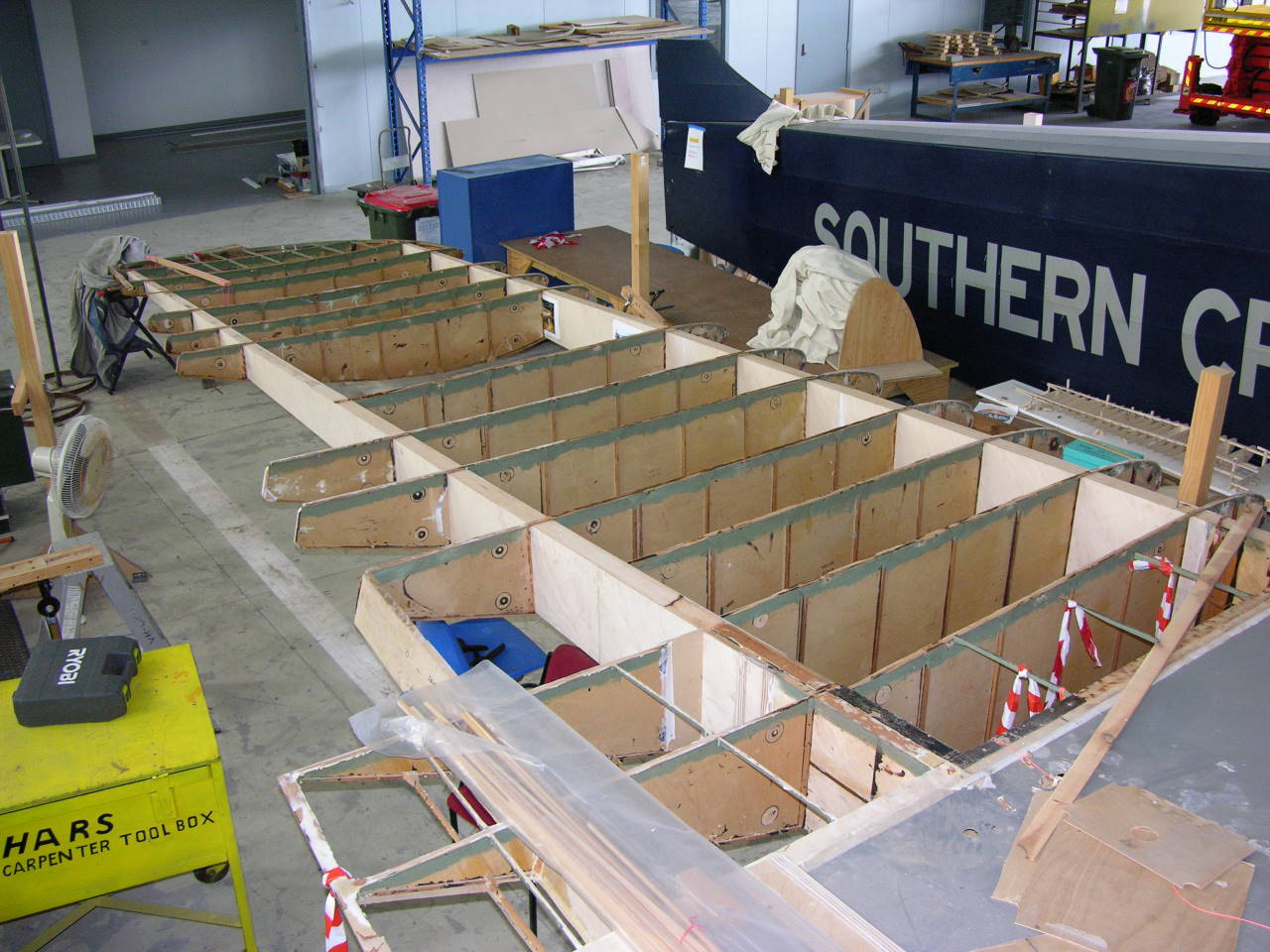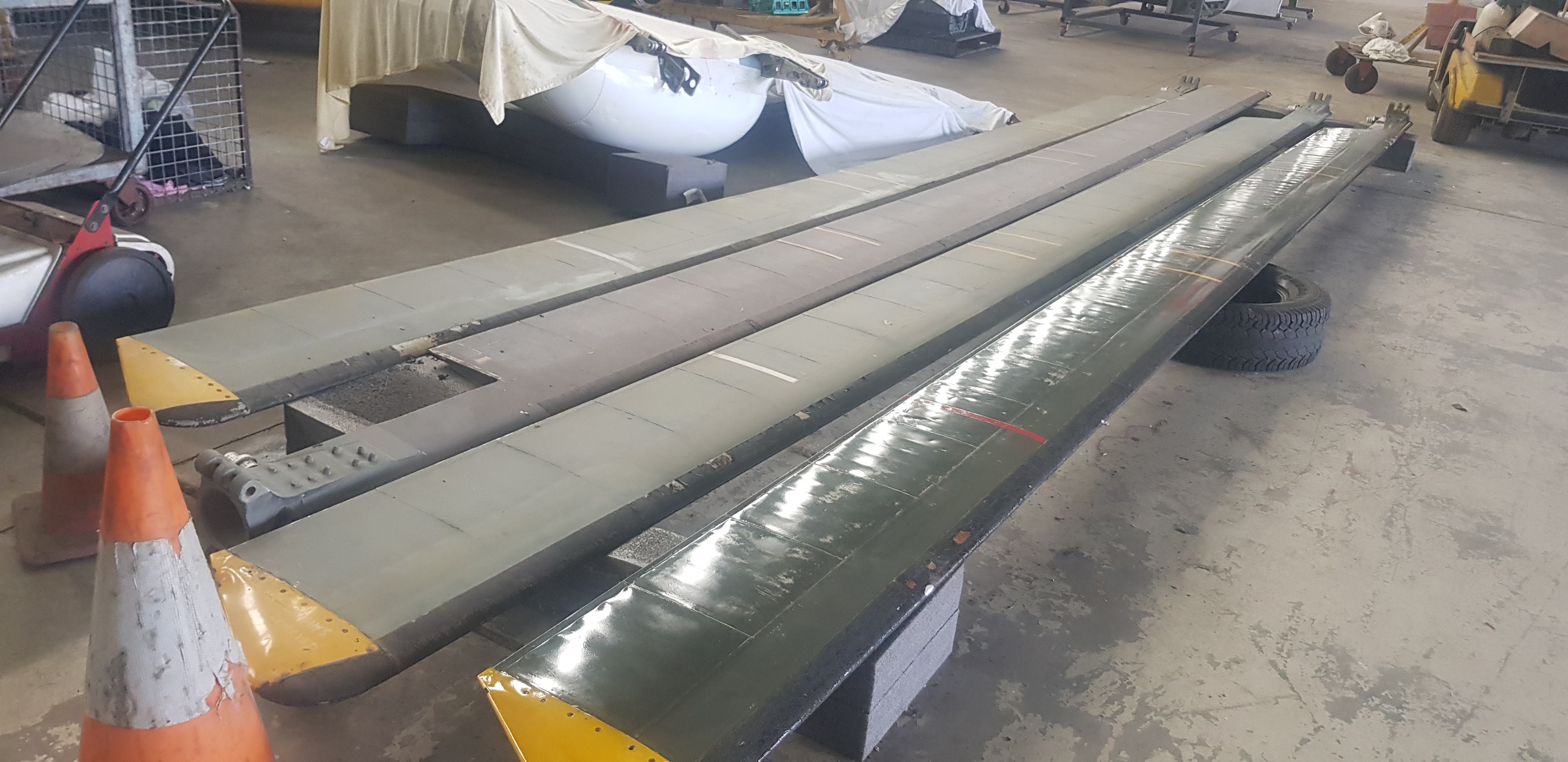The concept for the Grumman Tracker started as a design called the G-89. The G-89 proposal called for a twin engine aircraft capable of carrying weapons, sonobouys, and other submarine detection equipment, such as a Magnetic Anomaly Detector (MAD) and search radar all from a carrier flight deck. The United States Navy offered Grumman a contract to build the G-89 on 30 June 1950. The new airplane was designated the XS2F-1 Tracker. In 1962 the American renumbering system would change the designation to S-2 Tracker.
Grumman’s design (model G-89) was for a large high-wing monoplane with twin Wright Cyclone radial engines and its first flight was 4 December 1952, and production aircraft entered service, with VS-26, in February 1954. Follow-on versions included the WF Tracer and TF Trader, which became the E-1 Tracer and C-1 Trader in the rationalization of 1962. The S-2 carried the nickname ‘Stoof’ (S-two-F) throughout its military career.
Grumman produced 1,185 Trackers. Another 99 aircraft carrying the CS2F designation were manufactured in Canada under license by de Havilland Canada. US built versions of the Tracker were sold to various nations, including Australia, Japan and Taiwan.
The Royal Australian Navy (RAN) operated 2 Squadrons of S-2E and S-2G variants from 1967 until 1984. VS-816 Squadron, although based at Nowra, frequently embarked upon the Majestic class aircraft carrier HMAS Melbourne, CVS-21, as part of the 21st Carrier Air Group whenever that ship was deployed. VC-851 Squadron was formed at HMAS Albatross, Nowra as a land-based training squadron.
During about 20 years of operation of the Tracker, the RAN lost only one S-2 during aircraft operations due to an accident at sea. However, in the mid 1970s a deliberately lit fire in a hangar at Nowra destroyed or badly damaged a large proportion of the RAN’s complement of Trackers. These were subsequently replaced with ex-USN aircraft. The replacement aircraft were all S-2Gs, including the original aircraft modified by the USN to that status. This saw the introduction of AQA7 acoustic gear into RAN service and all RAN operational Trackers were subsequently modified to this standard. The AQA7 significantly enhanced the RAN’s ASW capability.
Unlike the Fairey Gannet which it replaced in RAN service, the Grumman Tracker was a somewhat more conventional aircraft capable of both detecting and attacking enemy submarines. As an all-weather carrier borne aircraft, the Tracker could also operate well beyond the range of the RAAF’s land-based Neptune and Orion maritime patrol aircraft.
Trackers could also work in conjunction with Naval helicopters like the Wessex that were equipped with dipping sonars, capable of detecting submarines. The Tracker’s ASW fit included sonobuoy ejector tubes, with sixteen built into the rear of each engine nacelle and firing straight out the back; a 70 million candlepower searchlight mounted on the right wing; an APS-38 search radar in a retractable ventral ‘dustbin’ radome, behind the weapons bay; and a retractable ASQ-10 magnetic anomaly detector (MAD) boom in the tail. Its long wings and powerful engines allowed it to operate from small carriers and short airfields.
The wings were folded hydraulically and a small tail wheel was fitted at the rear to act as a bumper on carrier landings. Flaps, slots and spoilers further enhanced this short take-off capability while the large rudder allowed it to fly on one engine.
Land based Trackers, operating from Broome (WA) and Darwin (NT) were also used for coastal surveillance in the 1980s to help detect illegal immigrants and smuggling operations. Sea Sprite and Seahawk helicopters have been acquired, since the Trackers were retired in the mid-1980s, to maintain the RAN’s anti-submarine warfare capability.
Our Grumman Tracker S-2G 851was delivered on 5 April 1977 and was withdrawn from service on 12 August 1984. It was sold to Qantas on 2 February 1990 as a training aid. It was acquired by HARS in 2006. It will be rebuilt to flying condition.

Aircraft Specifications
Grumman Tracker
Length 13.26 m | 43 ft 6 in
Wing Span 22.12 m | 72 ft 7 in
Height 5.33 m | 17 ft 6 in
Empty Weight 8,310 kg | 18,315 lbs
Loaded 10,630 kg | 23,435 lbs
Maximum Take Off Weight 11,860 kg | 26,147 lbs
Maximum Speed 450 km/h | 280 mph
Cruise Speed 240 km/h | 150 mph
Maximum Range 2,170 kms | 1,350 mls
Service Ceiling 6,700 m | 22,000 ft
Engines
2 x Wright R-1820-82WA radial engines- 1,525 hp (kW) each
Armament
2 x homing torpedoes, depth charges, or mines in the bomb bay
6 x underwing hardpoints for torpedoes, depth charges, or rockets



